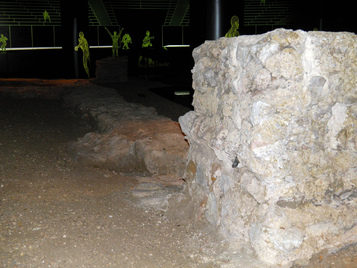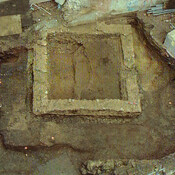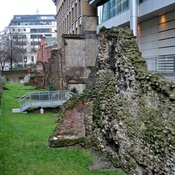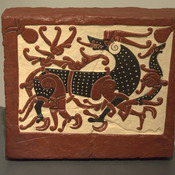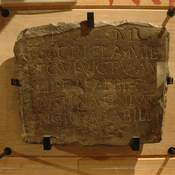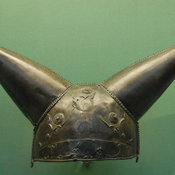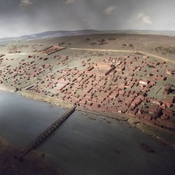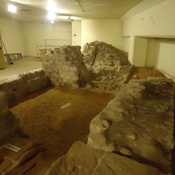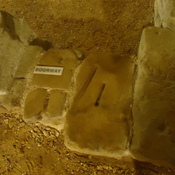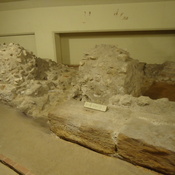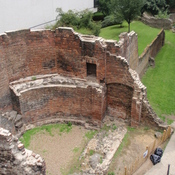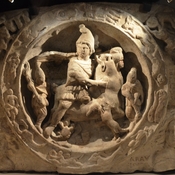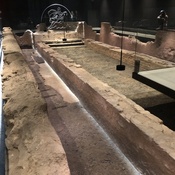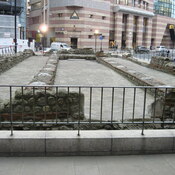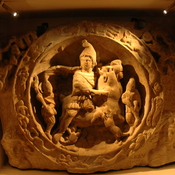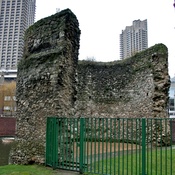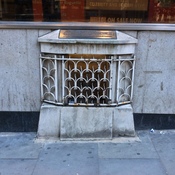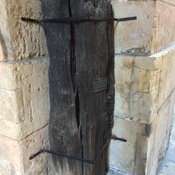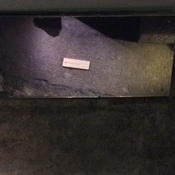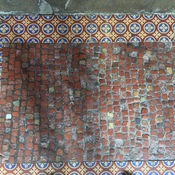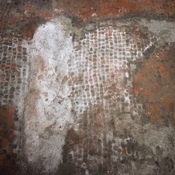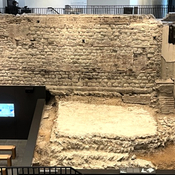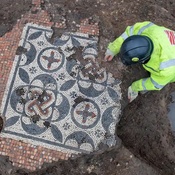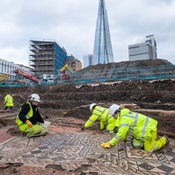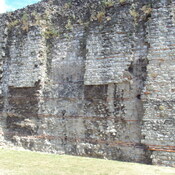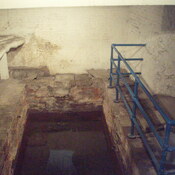Er zijn nog geen Nederlandstalige annotaties. Hier volgen annotaties in het Engels.
The surviving remains of London's Roman Amphitheatre include a stretch of the stone entrance tunnel, east gate, and arena walls. They are protected in a controlled environment, 20 feet below the modern pavement, in which they can dry out slowly without damage to the ancient stonework. The original extent of the outer wall is marked by a circle of black paving stones in Guildhall Yard.
London's Roman amphitheatre was a venue for wild animal fights, public executions and gladiatorial combats. Although these violent spectacles were sometimes criticised, particularly by the growing Christian community, they attracted huge audiences. St. Augustine, writing in the 4th century AD, describes the infectious power of the crowd's mood on even the most disapproving visitor, ' he opened his eyes, feeling perfectly prepared to treat whatever he might see with scorn ... He saw the blood and he gulped down the savagery... He was no longer the man who had come there but was one of the crowd to which he had come.' 1
Bronverwijzingen
- ↑Guildhall Art Gallery: About The Amphitheatre
The surviving remains of London's Roman Amphitheatre include a stretch of the stone entrance tunnel, east gate, and arena walls. They are protected in a controlled environment, 20 feet below the modern pavement, in which they can dry out slowly without damage to the ancient stonework. The original extent of the outer wall is marked by a circle of black paving stones in Guildhall Yard.
London's Roman amphitheatre was a venue for wild animal fights, public executions and gladiatorial combats. Although these violent spectacles were sometimes criticised, particularly by the growing Christian community, they attracted huge audiences. St. Augustine, writing in the 4th century AD, describes the infectious power of the crowd's mood on even the most disapproving visitor, ' he opened his eyes, feeling perfectly prepared to treat whatever he might see with scorn ... He saw the blood and he gulped down the savagery... He was no longer the man who had come there but was one of the crowd to which he had come.' 1
Bronverwijzingen
- ↑Guildhall Art Gallery: About The Amphitheatre

